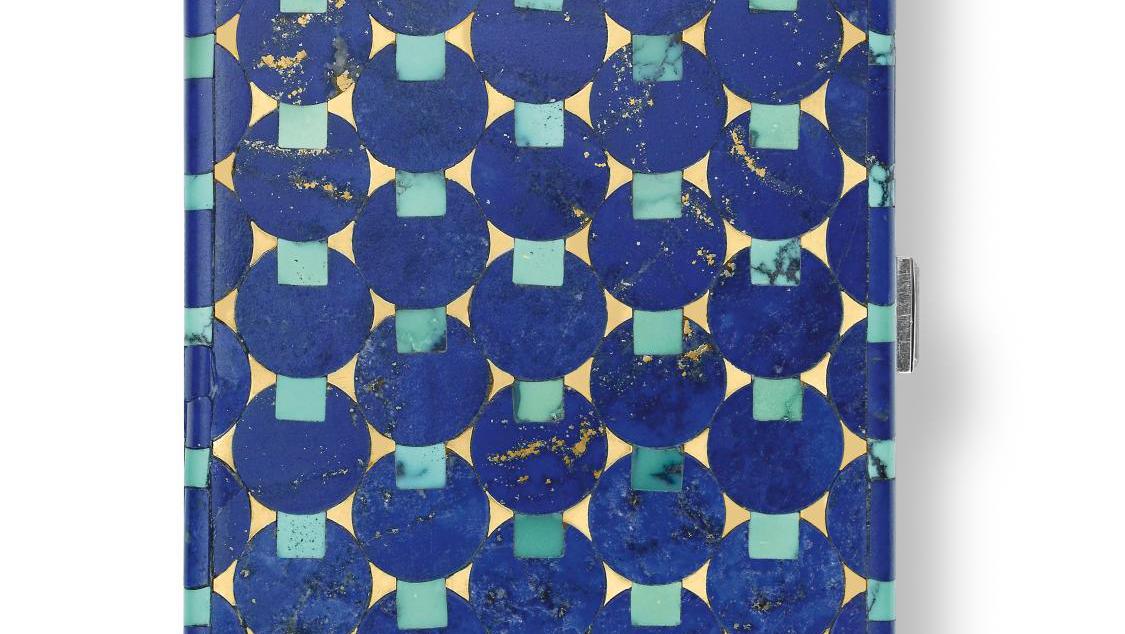A new exhibition at the Musée des Arts Décoratifs (MAD) in Paris reveals the influence exerted by the arts of Islam for over a century on the jeweler's creations in terms of form, decoration and color. An area of unsuspected splendor.
Cigarette case, 1930, gold, platinum, lapis lazuli, turquoise, diamond, Cartier Collection.
Photo: Nils Herrmann © Cartier
Cartier, a jeweler, was also an antique dealer. In addition to contemporary jewelry, the company offered for sale Sèvres porcelain ,18th-century silverware and small paintings. Was it this ambiance that gave Louis Cartier (1875-1942), the third to take the helm, a taste for collecting? His attraction to antique objects was a determining factor in the company's aesthetic explorations. "In 1900, the 25-year-old Louis Cartier was a young designer on the lookout for new inspiration," says Pierre Rainero, Cartier's director of style, image and heritage. "He had an inquisitive mind and a passionate love for China, and collected Japanese Inrô . While we have already highlighted the contribution of Asian art to our designs, this is the first time we are covering in such depth the influence of the Near East, which left a deeper imprint." Here, at the Musée des Arts Décoratifs in Paris, some three hundred objets d’art from Persia, the Arab world, and Mughal India are seen in relation to jewels, cases, and clocks by Cartier. The exhibition is overseen by a quartet of curators: two from the Dallas Museum of Art, the exhibition's partner, and a scholarly Parisian duo formed…
com.dsi.gazette.Article : 29126
This content is for subscribers only
You still have 85% left to read.
